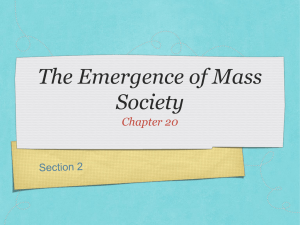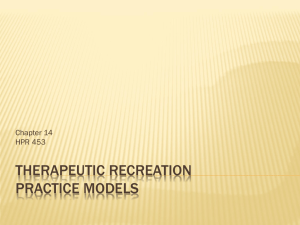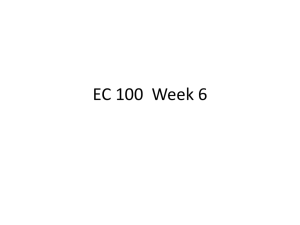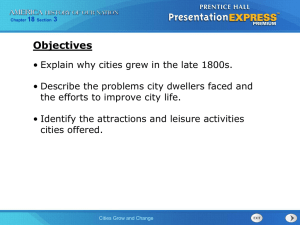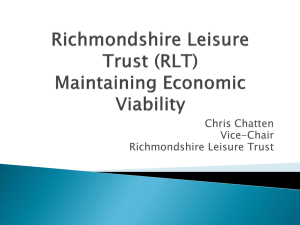Earned Income Tax Credit
advertisement
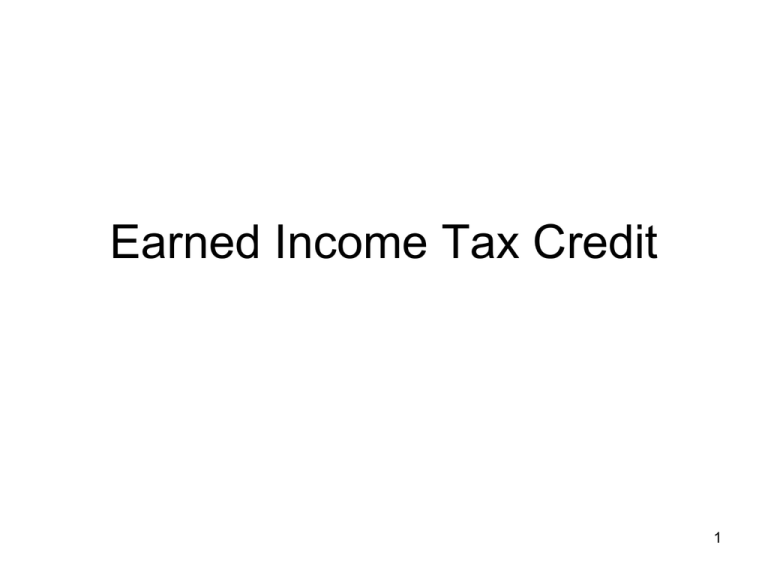
Earned Income Tax Credit 1 Consumption 35,263 Here we have an application of government policy that alters the budget of the individual. Without the policy we have the straight line budget as usual (assuming no nonlabor income.) 18,700 15,400 14,370 I will explain the numbers more on the next slide or 2. Note for now we do not worry about the exact amount of leisure 11,000 Leisure 2 On the normal budget line we see what happens in the absence of government policy. The Earned Income Tax Credit is a policy that assists people by making early dollars they earn worth more than a dollar to them. As the individual starts to give up leisure (at the leisure intercept) a movement along the normal budget shows an income level 11,000. What the government will do for folks who qualify is give them a 40% tax credit on their income up to 11,000. Essentially this means that for every dollar they earn at work the government gives them 40 cents. The new budget shows a segment up to 11,000(1 + .4) = 11,000 + 4400 = 15,400. So the government will give the individual up to 4400 when they start working. Then when the individual on their own makes between 11,000 and 14,370 the individual can still get the whole credit of 4400, so their real budget is between 15,400 and 18,770. This is the segment parallel to the original budget. Now, after the individual makes 14,370 on their own the credit is reduced 21.06 cents for every additional dollar earned. How many 21.06 cents are in $4400? 20,893! So this many dollars above 14,370 is where the new budget crosses back and hits the original budget (at 35,263). 3 The earned income tax credit helps an individual who does not work take on work because it takes every dollar of pay and makes it 1.40 (up to 11,000, of course). Consumption Seems to me the aim of the policy at this stage is make it hard to take leisure – or very enticing to work – move from A to B. B A Leisure 4 For the person who is already working, the plan may entice the person to work more or less. We can not predict for sure what will happen. But if the income effect is greater than the sub. effect the individual will work less (and end up to the right of the vertical line). Consumption A Leisure 5 For the person who is already working a great deal of time, the plan has a disincentive to work (A to B means less labor supplied). But there is also still the possibility that the person’s consumption amount will be greater under the plan than without the plan. Consumption B A Leisure 6 Two major conclusions of the economic view of this program: 1) The economy would get more labor market participants because individuals have to work to make it in the program, 2) The hours worked of those already in the labor force before the program would change. The author suggests there is evidence that 1) has actually happened. Table 2-5 in book has a table with the following information: Unmarried women with children eligible for the program had an increase in participation in the market from 72.9% before the program to 75.3% after the program. Now, the thinking is that maybe something else accounted for the increase in participation – maybe a strong economy lead them to enter the workforce. So, we need a control group to compare against the above group. Unmarried women without children would not be eligible for the program. Their participation rate stayed the same at 95.2% both before and after the program. So if other factors where at work we would have expected to see that here and we did not. 7 The difference in the eligible group rate was 2.4% and the non-eligible group was 0. The difference in differences is then 2.4% - 0% = 2.4% Essentially what is happening here is that whatever difference we saw in the non-eligible group was netted out from the eligible group. Any difference remaining is due to the program. It thus appears that the earned income tax credit program has lead to an increase in labor force participation. 8

